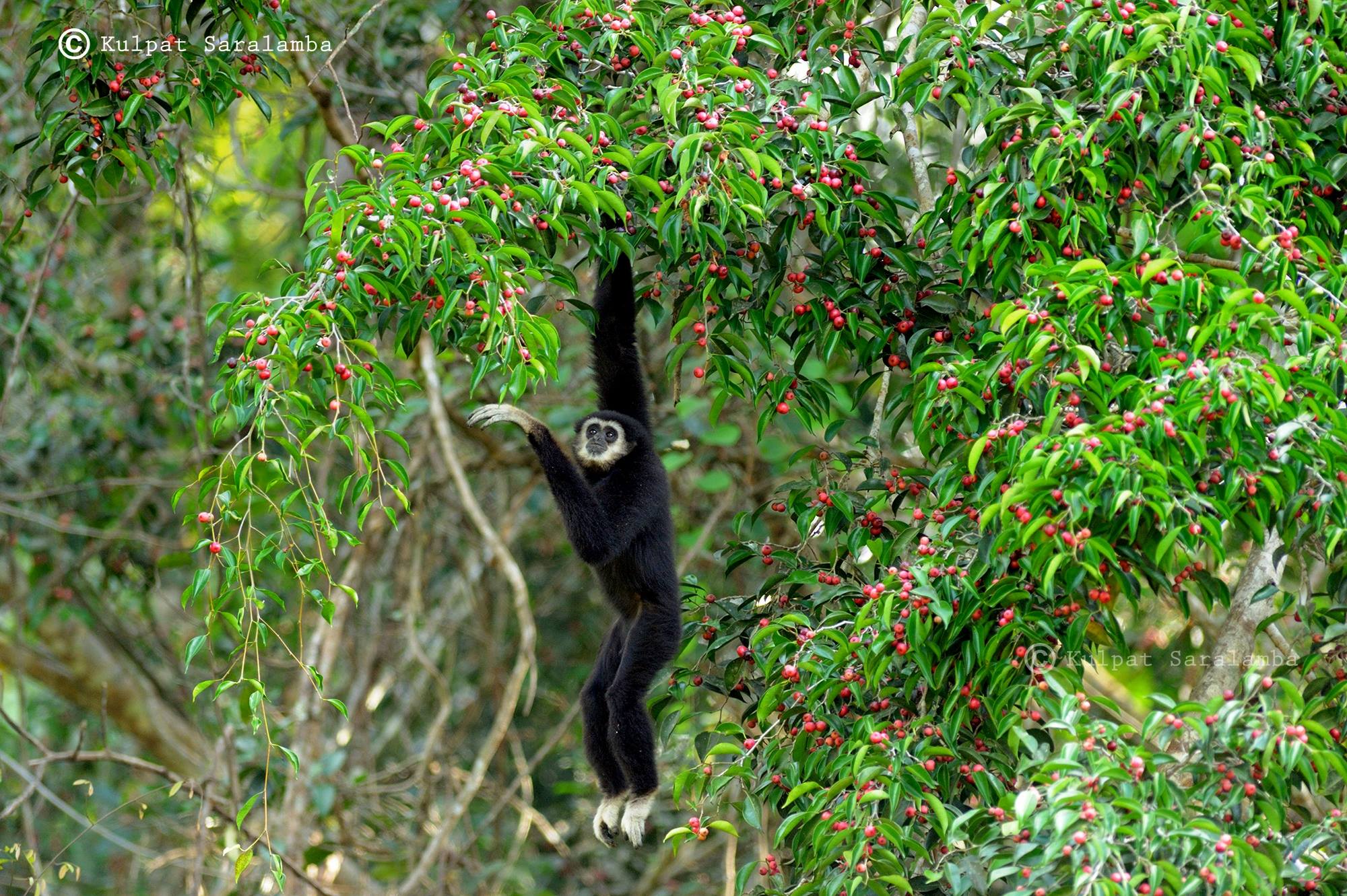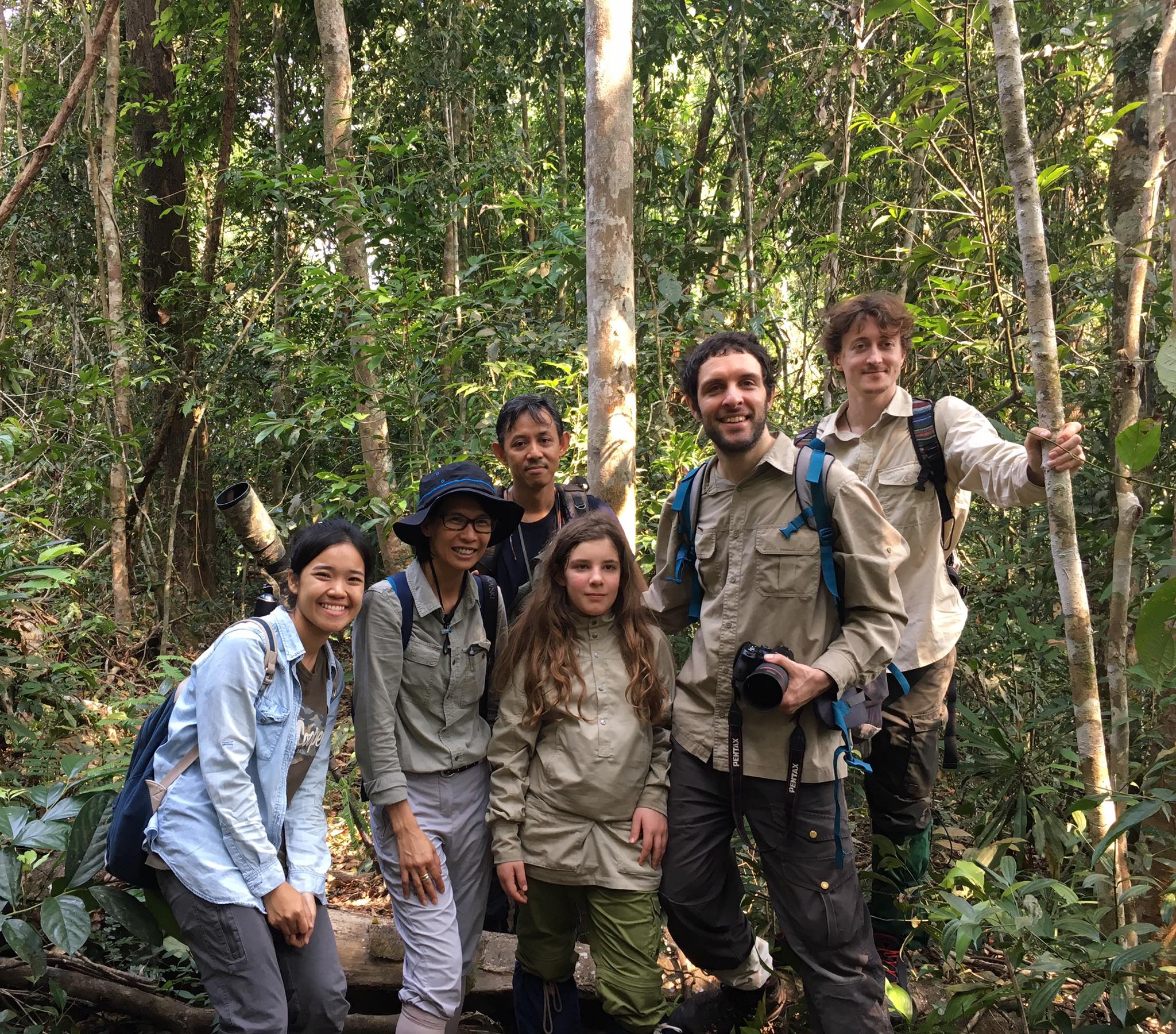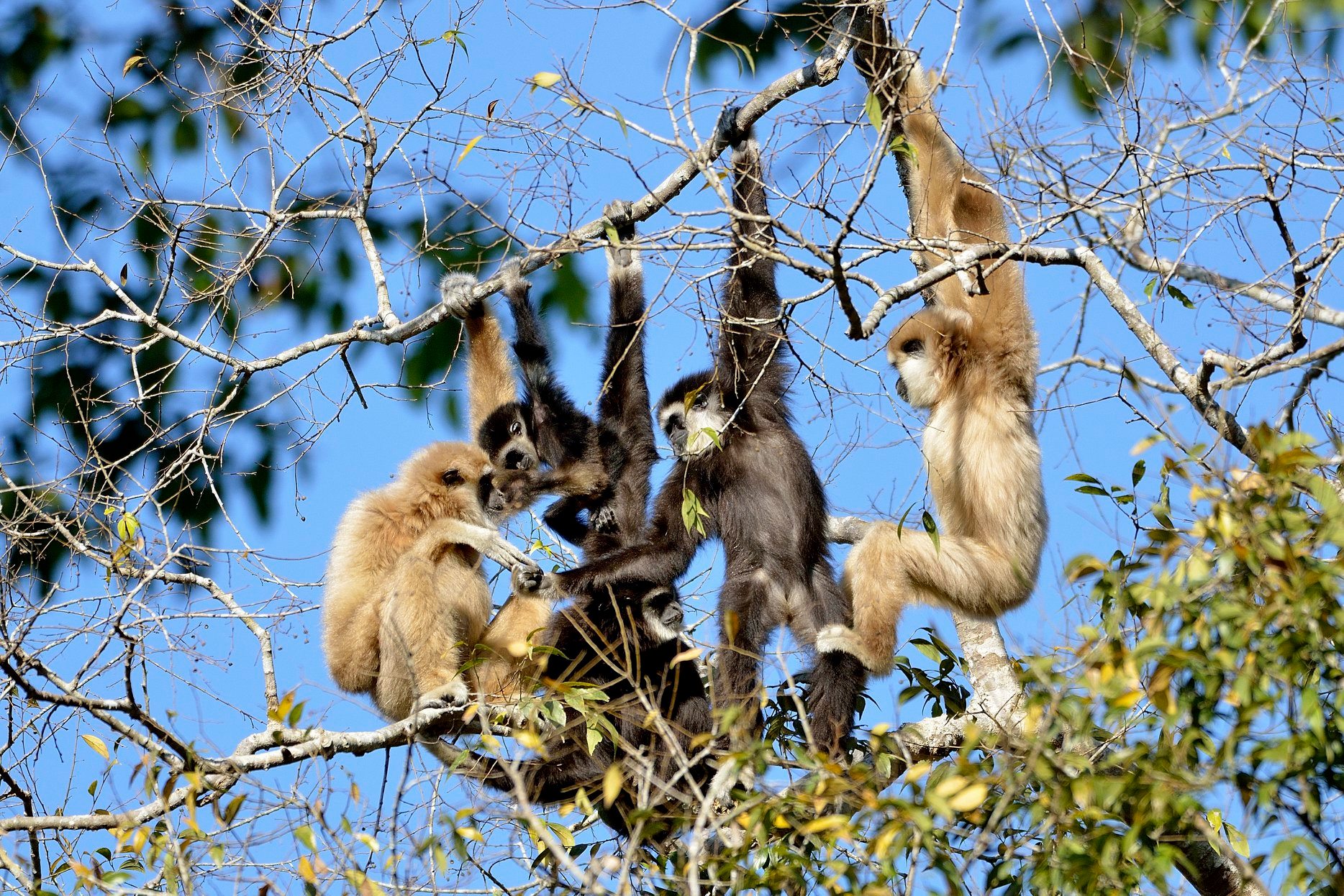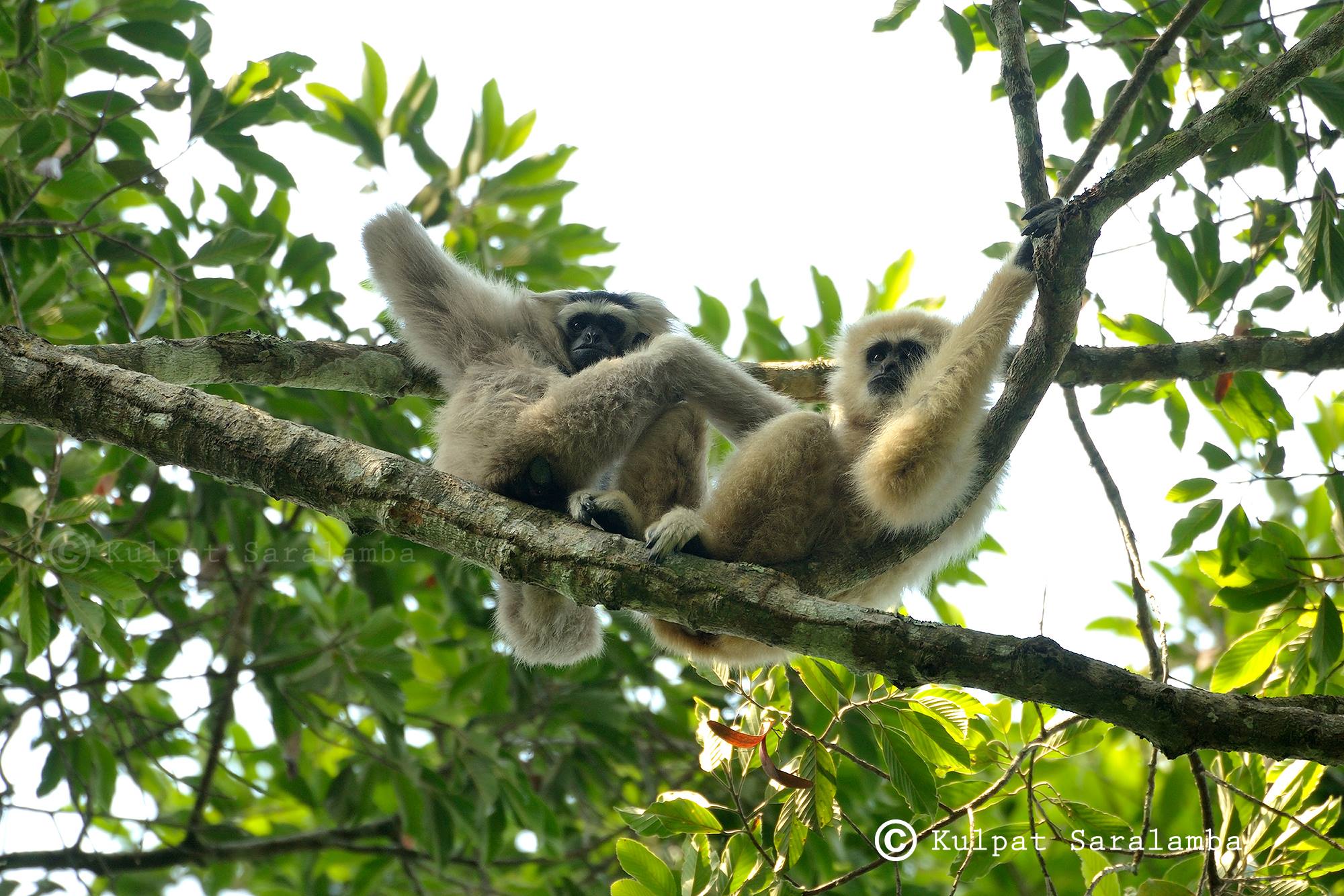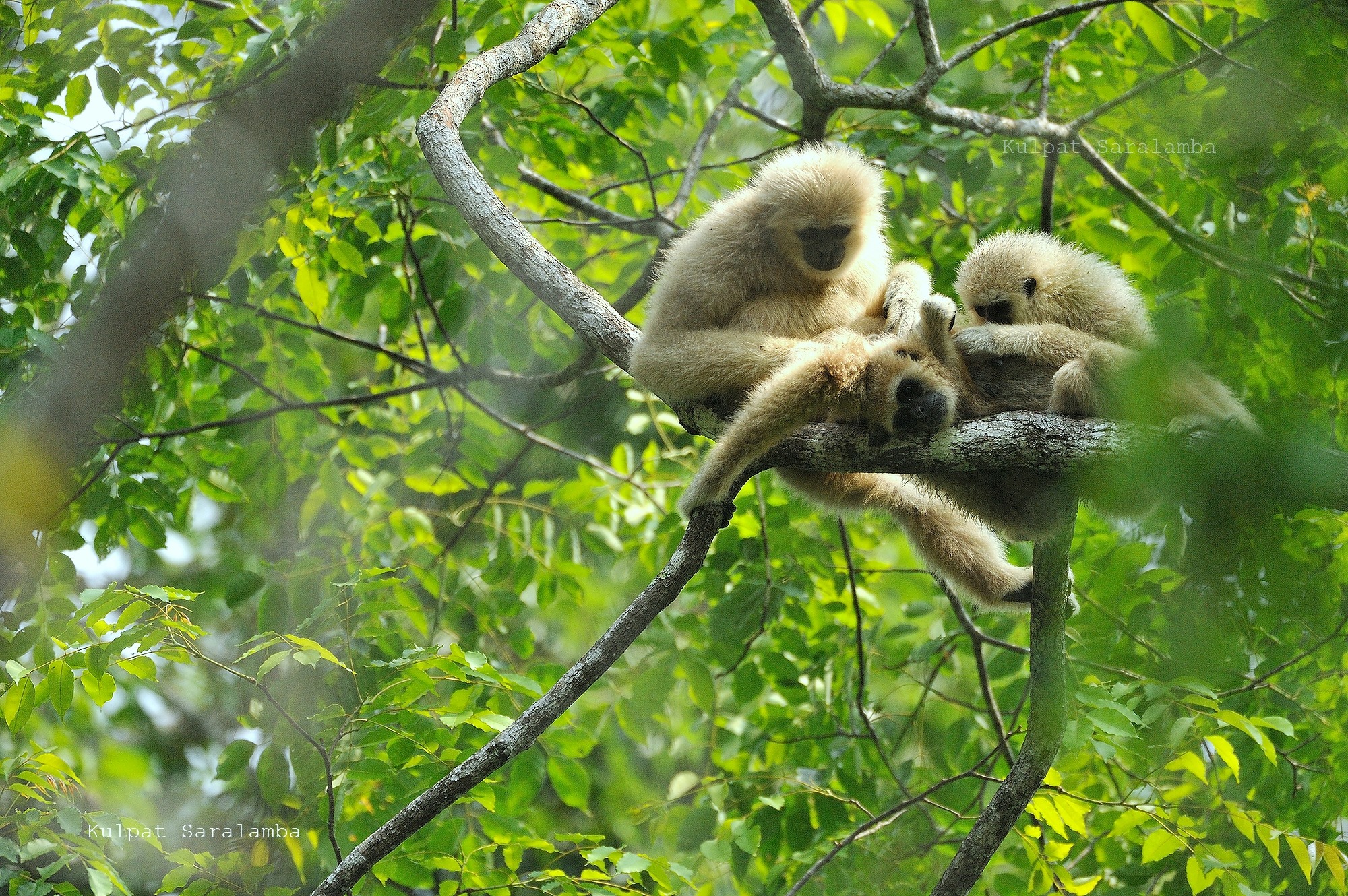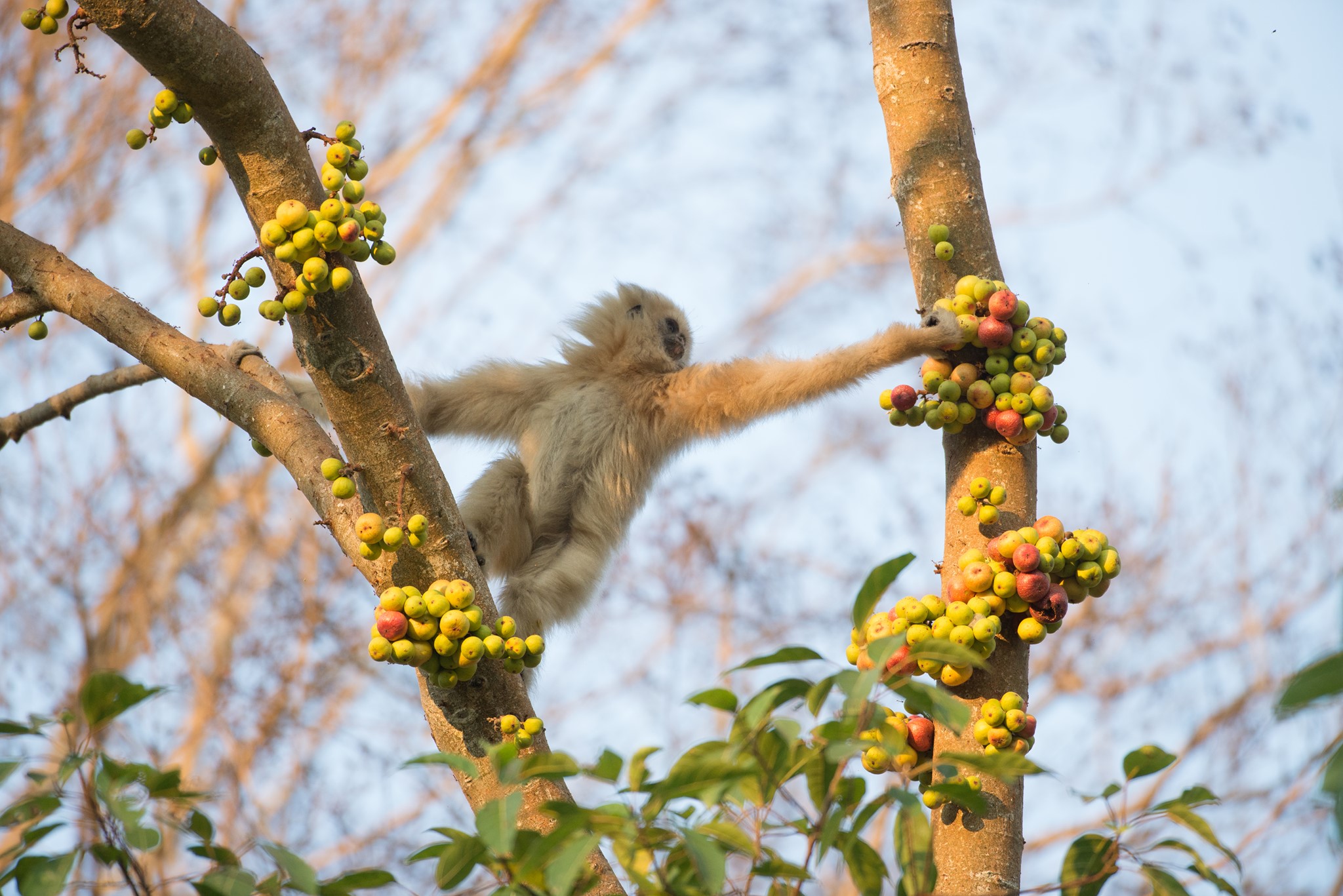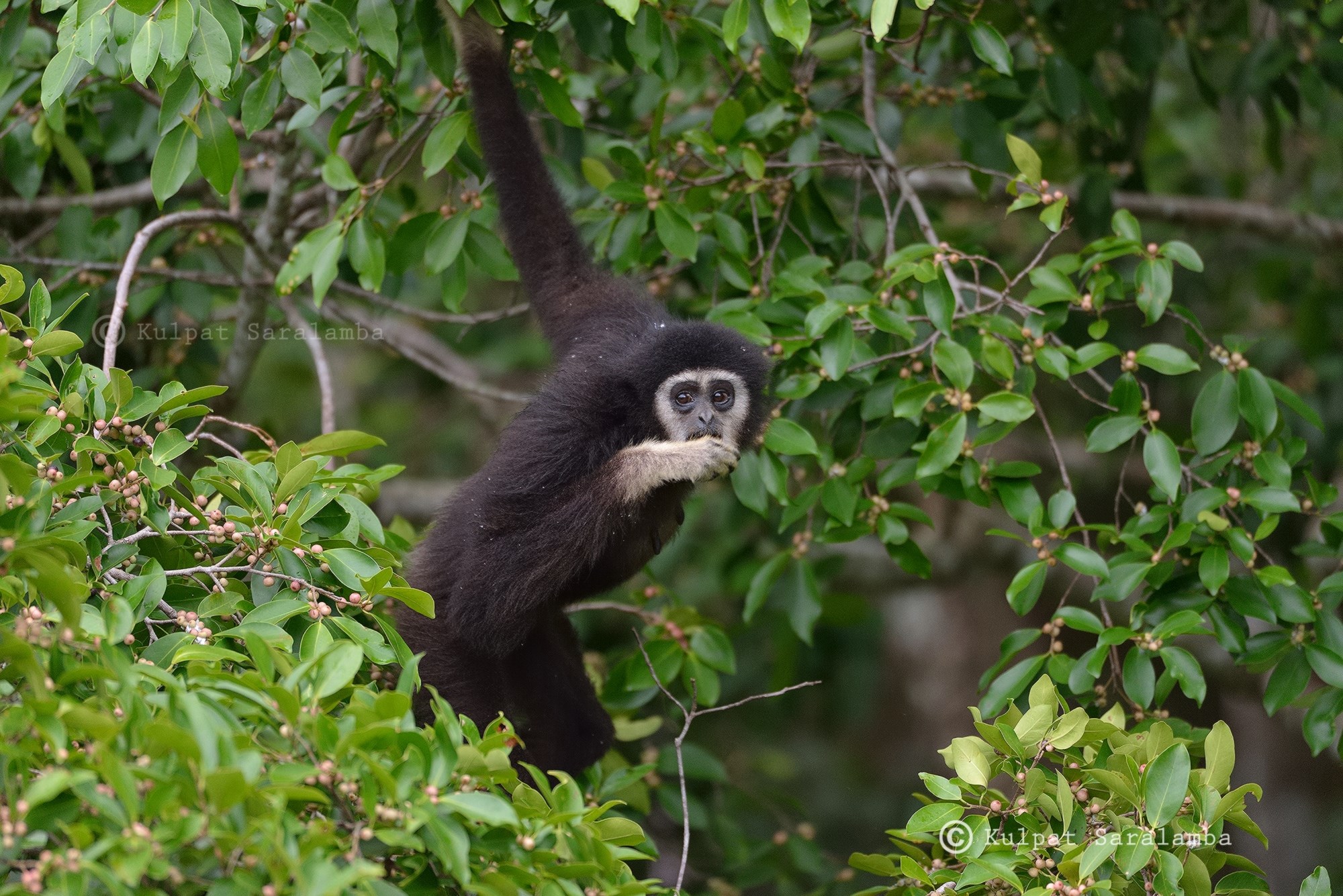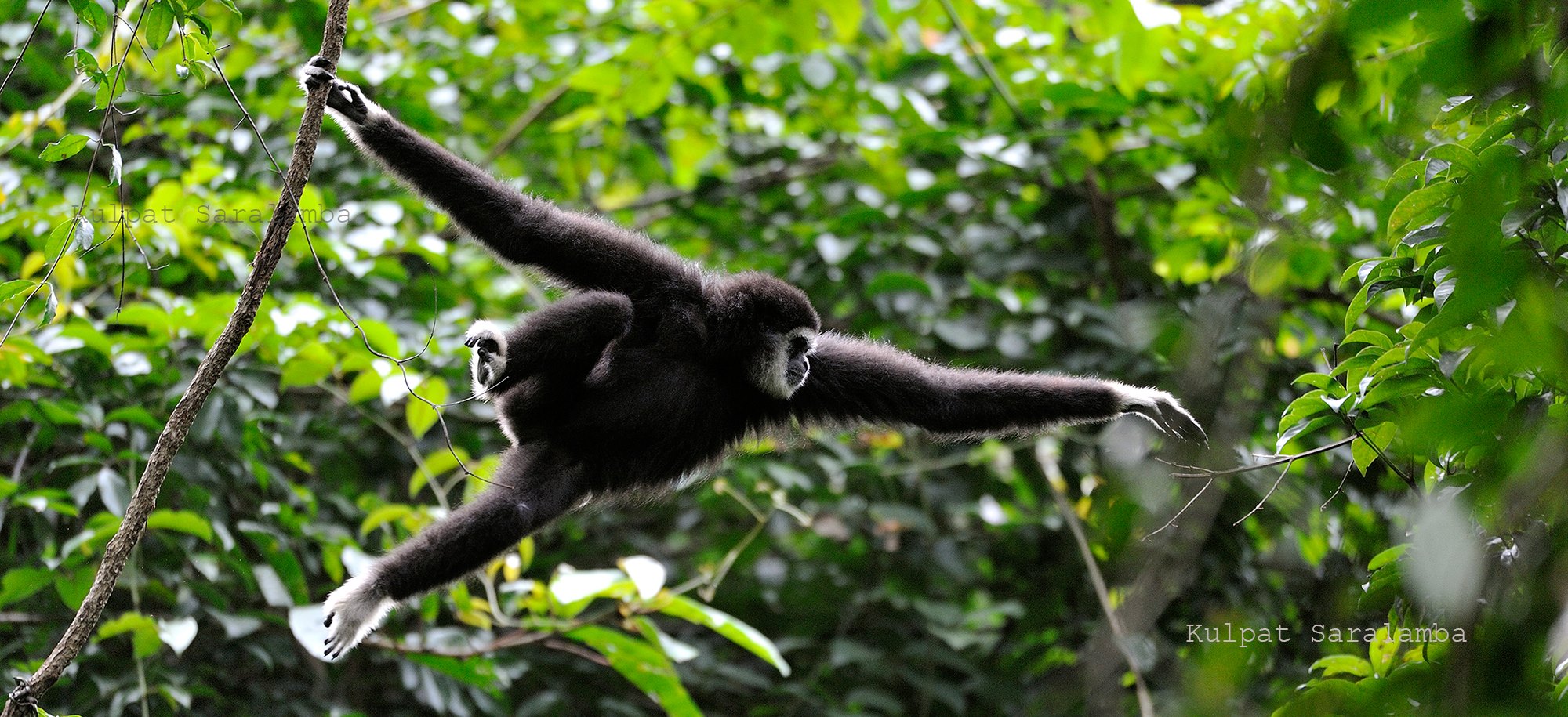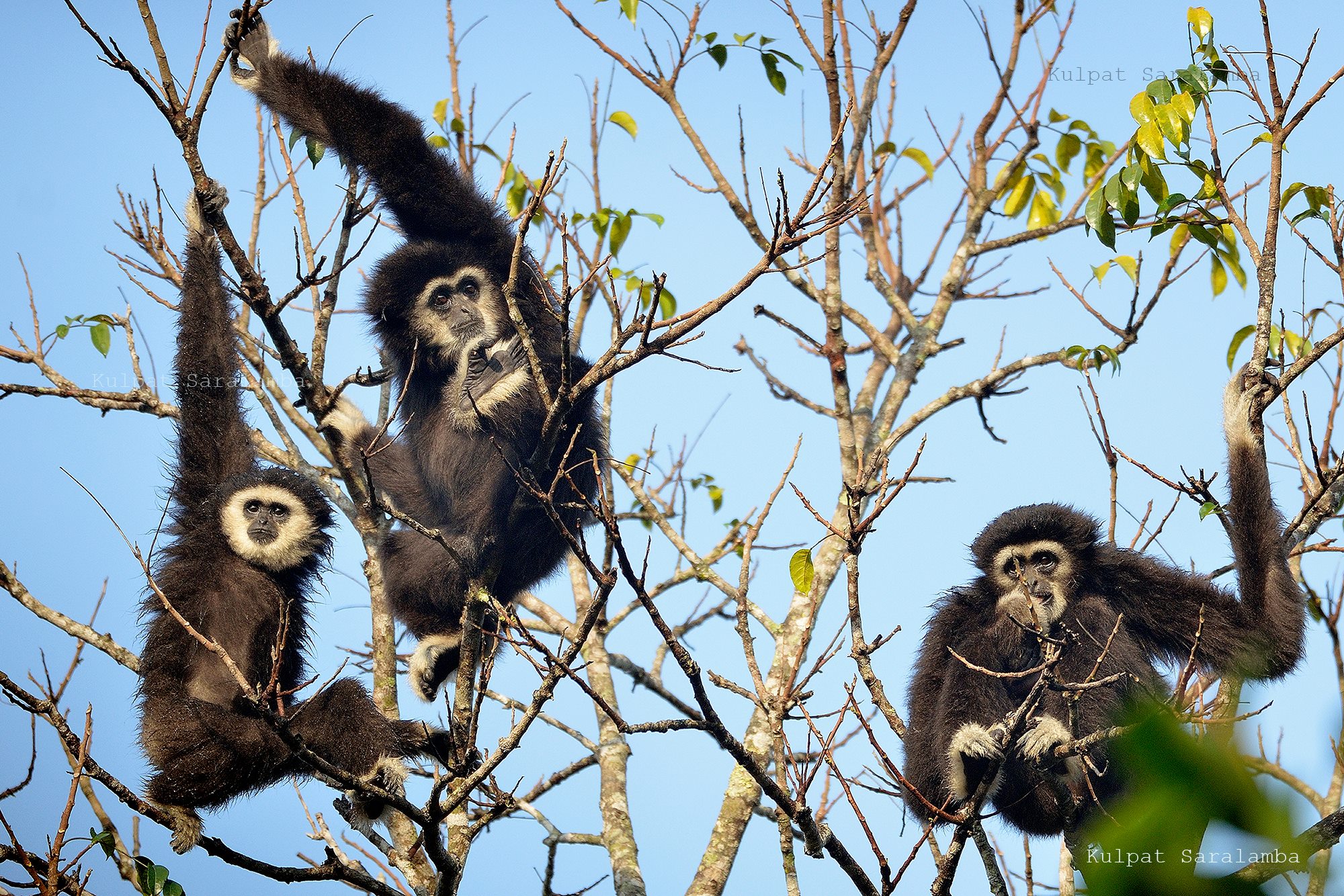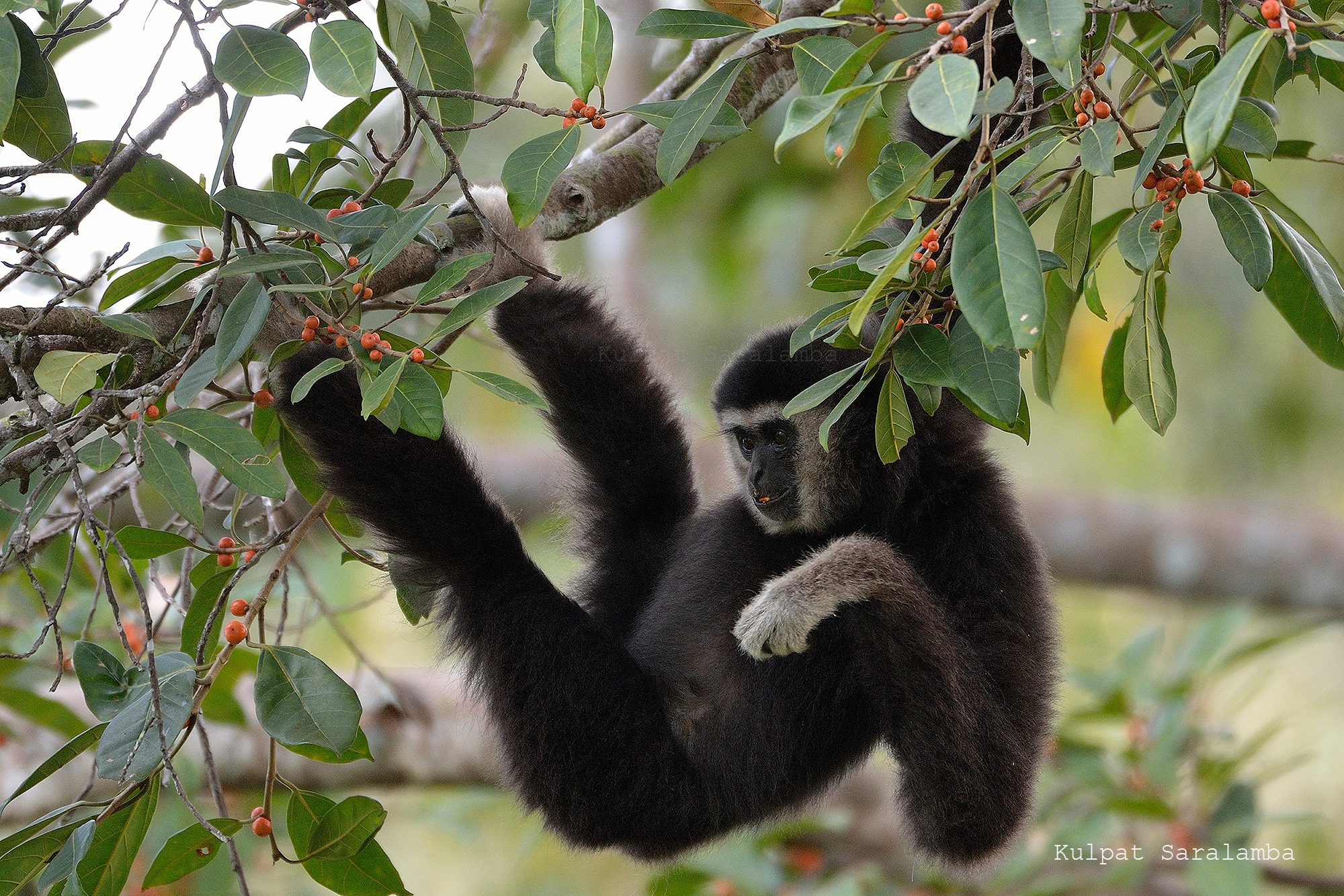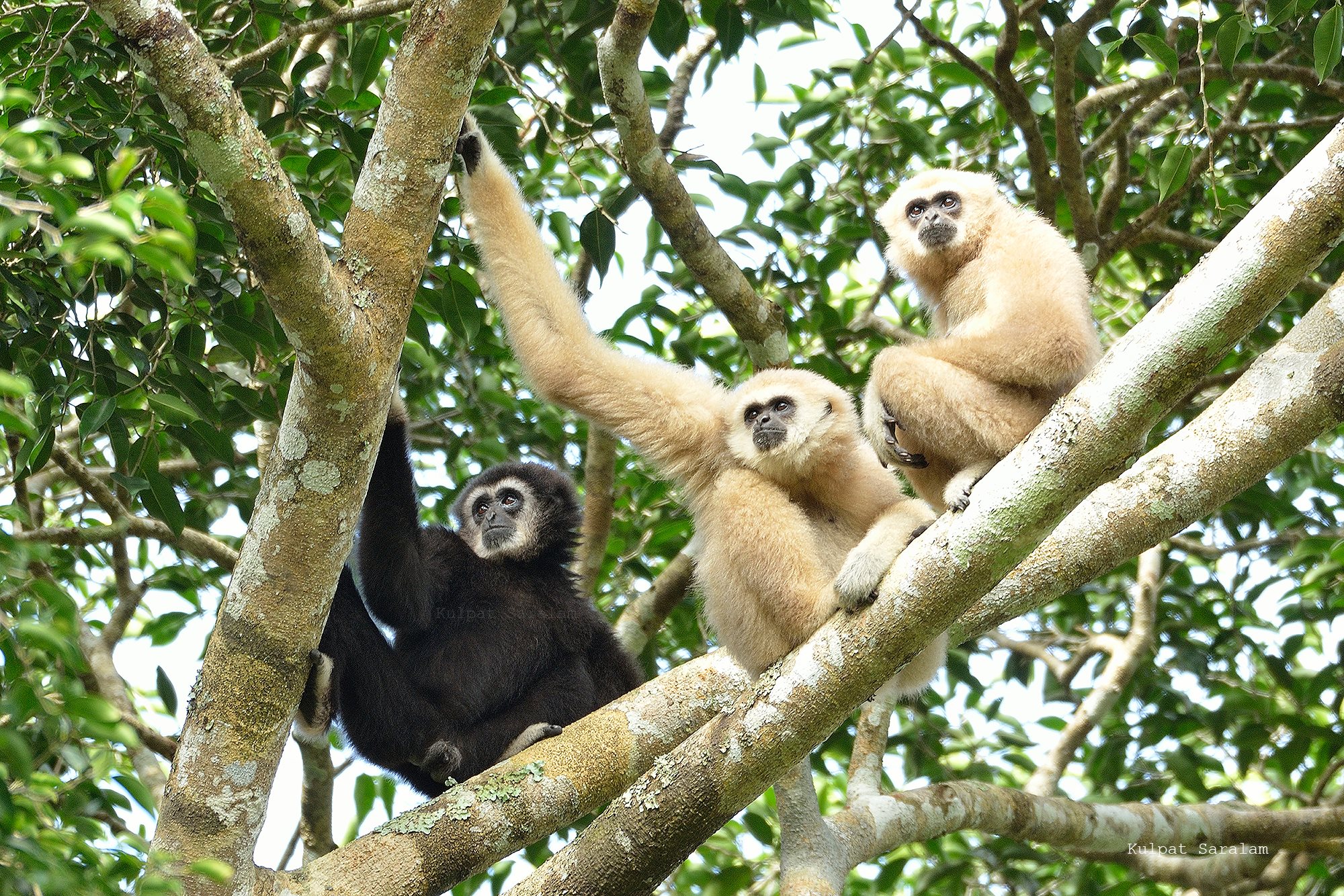The gibbon is considered a vital seed disperser in the uppermost hierarchy of tropical forests. By conserving the gibbon population, we would naturally have foresters in abundance.
Exploring the Biodiverse World of Khao Yai National Park: Uncovering the Secrets of Endangered Gibbons
Operations
The Khao Yai National Park, which is the first national park in Thailand and a part of the UNESCO World Heritage Site "Dong Phayayen-Khao Yai Forest Complex" is of great significance for ecology and plays a crucial role in preserving rare and endangered wildlife and plant species. As a source of biodiversity, the park provides a habitat for various species of plants and animals that are of global interest and are still able to survive.
Two species of primates that are considered endangered according to the IUCN Red List, the white-handed gibbon (H. lar) and the pileated gibbon (H. pileatus), are inhabitants of the Khao Yai National Park. The study of gibbons in this park was initiated by Professor Warren Y. Brockelman, a former professor of the Department of Biology at the Faculty of Science, Mahidol University. Since 1967, Professor Brockelman and his team of Thai and foreign researchers have been conducting long-term studies on the ecology, population assessment, family and social behavior, habitat, and food plants of the gibbons in the park.
In 1996, the National Center for Genetic Engineering and Biotechnology (BIOTEC) center of the National Science and Technology Development Agency (NSTDA) established the ‘Mo Singto long-term biodiversity research plot’ which covers approximately 30.5 hectares. This area is considered one of the best sites for long-term ecology studies in Thailand and the research team has been monitoring and surveying the ecology, population, and biology of the gibbons, the diversity of flora, seed dispersal, and the relationships between different species for over 20 years. Currently, the aforementioned area receives support for long-term research from the National Biobank of Thailand (NBT).
Dr. Chanpen Saralamba started her research on gibbons in 2004 and later became a full-time lecturer in the Department of Conservation Biology at the Mahidol University Kanchanaburi Campus. She has continuously conducted research in the Khao Yai National Park and regularly sends undergraduate students for field training and preliminary research. The research operations conducted include the following topics:
- Comparison of the Form and Structure of Vocalization of the White-handed Gibbon, pileated gibbon, and Hybrid Gibbons in Khao Yai National Park.
- The difference between the canopy and food plants in the feeding area of two species of gibbon (white-handed gibbon and pileated gibbon) in Khao Yai National Park.
- Case Study: Behavioral Expression of White-Handed Gibbons Affected by Habitat Fragmentation in National Parks.
- The ecology and behavior of white-handed gibbons in Khao Yai National Park, Thailand.
- The parenting behavior of white-handed gibbons at Khao Yai National Park.
These operations are aimed at conservation planning and the preservation of endangered species, as well as educating the community and society about the importance of wildlife and plant conservation.
Research
The ongoing research on the diversity of life in the Khao Yai National Park in Thailand has been a continuous operation for the purpose of studying gibbons' food plants, seed dispersal, and the impact of climate change on the species. Commenced in 2012, this research project has been progressing steadily with a current focus on the context-related variation of vocal sounds in white-handed gibbons. The project is being led by Dr. Ulrich H. Reichard of Southern Illinois University in the United States of America.
For more information about research
- Long-Distance Vocal Signaling in White-Handed Gibbons (Hylobates lar)
International Journal of Primatology / July 2022 - The impact of roads on the movement of arboreal fauna in protected areas: The case of lar and pileated gibbons in Khao Yai National Park, Thailand
Journal of Tropical Ecology / 2021 - Composition of frugivores of Baccaurea ramiflora (Phyllanthaceae) and effects of environmental factors on frugivory in two tropical forests of China and Thailand
Global Ecology and Conservation / September 2020
Learning
The transfer of knowledge regarding the behavior of white-handed gibbons has been conveyed to the target audience through the utilization of the Clip VDO via the Mahidol Channel: Animal Speak [by Mahidol]. This channel boasts over one million subscribers, thus allowing for a wide range of viewership, particularly among children and young people. The knowledge transfer has also been facilitated through the utilization of various media and websites.
For more information
- Get to know gibbons better : Animals Speak [by Mahidol] Click

- The Mo Singto long-term biodiversity research plot Click

- The National Biobank of Thailand (NBT) Click

ความร่วมมือ (Collaboration)
Collaboration in research is carried out by both domestic and international organizations, such as the National Center for Genetic Engineering and Biotechnology (BIOTEC), The University of Nottingham Malaysia Campus (Malaysia), University of Chinese Academy of Sciences (China), Universidad del Pais (Spain), Playa Lakes Joint Venture (USA), and Oregon State University (USA). These organizations are working together in an effort to advance the field of research.
Thank you Photo by Mr.Kulpat Saralamba
-



